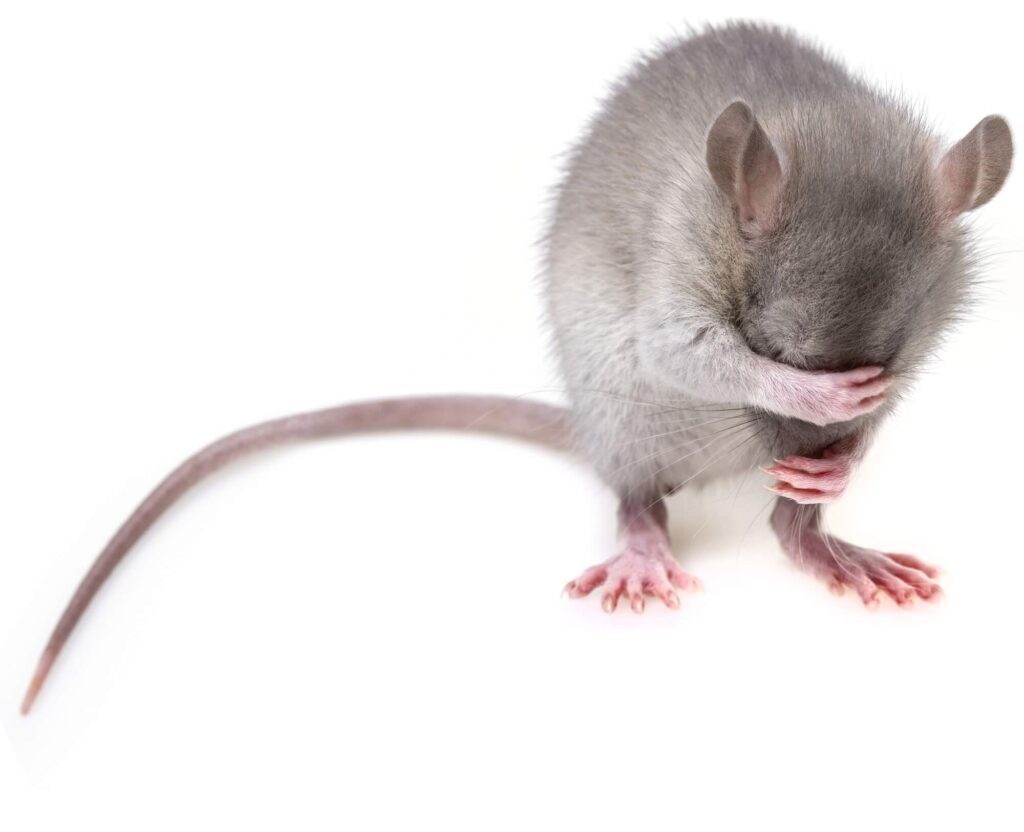You go to your kitchen in the middle of the night to grab a snack and you hear it.
The tell-tale signs. The pitter-patter of tiny feet.
Maybe you get a glimpse of one and its gone before you know it.
Is it a mouse or a rat? Does it matter?
It does. In fact, knowing whether you have a rat infestation or a mouse infestation can help you in getting rid of them.
Want to learn more? Keep reading to learn the difference between rats vs mice in your home.
Appearance
When you first see a mouse or a rat scurrying by in your home, you may not initially care which type of rodent it is. You just want it out of your house.
However, rats and mice are quite different, and it helps to know the difference between the two.
Mice
Mice are smaller in size. The most common mouse that invades homes is the house mouse. This mouse is usually light brown with gray coloring.
The house mouse can range from 12 to 20 cm in length with the tail. It weighs around half an ounce or 12 to 30 grams.
When trying to tell the difference between a rat and a mouse, one difference is the ears. The House Mouse has floppy, large ears. It also has a small head and feet in comparison to its body.
The House Mouse has a snout that is triangular and a long, thin, hairy tail.
Rats
There are two common types of rats that you can find in your home.
Roof Rat
A Roof Rat weighs around 7 ounces or close to 200 grams. It’s gray with black shading. Its snout is pointed, and it has an overall slender body.
Norway Rat
A Norway Rat is the largest–11 ounces or nearly 300 grams. It has a body that’s thick and heavy and its brown with black shading.
Another major difference compared to mice is its blunt snout. A Norway Rat also has short ears and a shaggy coat while the Roof Rat has a smooth coat.
Behavior
Both rats and mice are nocturnal. However, when it comes to their behavior, there are key differences.
Mice
Mice are good climbers and might nest in the attic of your home. Because they’re so small, they can fit almost anywhere.
Mice are also more curious and less cautious than rats. If you put out a trap, mice are more likely than rats to check it out and get caught in it.
Although mice are nocturnal, you might find them looking for food during the day.
Mice will eat nearly anything, but they like to eat plants or cereal grains. They will make a nest close to a food source. They’ll build their nest with any soft material.
Mice can stand on their hind legs if they need to fight or eat. They can jump, climb and swim. You can even find a mouse climbing up a vertical wall.
A mouse can run along thin materials such as cables and wires. They can jump up to 13 inches high.
Mice are actually afraid of rats. If they smell the presence of a rat, they will most likely stay away because rats will fight, kill, and eat a mouse.
Rats
Rats are more careful than mice. You won’t be able to trap them as easily.
You can find rats in lower levels of your home like the basement. They can enter a home through a hole that is 0.5 inch in diameter.
Rats stay close to their nesting area. They are good climbers and swimmers as well. They’ll climb to reach a food source.
Rats can burrow and dig–mice can’t. They can dig underneath buildings. Norway Rats live in burrows while Roof Rats live in nests.
Damage in Your Home
If you store food in a strong container such as glass or metal, mice won’t be likely to gnaw through it. However, rats have stronger teeth than mice. They can gnaw through almost any building material such as wood, brick, and even soft metals.
Both rats and mice can cause damage to your home. They can gnaw on wires and ruin the material structure of your house.
Both rodents can cause health problems and spread disease or bacteria. You can get sick from breathing in dust contaminated by rodent droppings or urine.
Presence of Rats or Mice in Your Home
What are the tell-tale signs of mice or rats in your home? Look for small footprints or tracks. You can also look for gnawing marks and smears along walls and baseboards.
Another obvious sign is rodent droppings. You can tell the difference between the droppings based on their size. Rat droppings are much longer and thicker than mice droppings.
Mice droppings look small with pointed ends. Rat droppings are thick with rounded ends.
Another thing to look for is strange noises, especially at night. You may hear scratching sounds or squeaking sounds in the walls.
Why It Matters If You Have Rats vs Mice in Your Home
It matters if you have rat vs mice in your home because you have to know how to trap them. Your rodent removal technique will differ based on whether you have rats in your home or mice.
Generally, rats are more difficult to trap or remove. They are larger so traditional mice traps may be too small for them. They are also more cautious and won’t investigate something new like bait or a trap.
How To Get Rid Of Them
Now that you know if its rats vs mice in your home, you can take the next steps to remove them. You can try to get rid of them yourself with at-home extermination techniques.
Or, you can leave the job to the professionals. Contact us and get a free inspection to make your home pest-free again.






